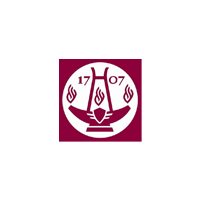Printing plate
pewter plate
Civitas Londinum (Agas Map)
Object number
LDSAL2022.2.118.a
Artist/Designer/Maker
Vertue, George - Engraver
Production date
1737
Production place
London
Material
pewter
Technique
Etching
Dimensions
height: 358mm
width: 491mm
width: 491mm
Location
Burlington House -
Content description
One of 8 printing plates reproducing a supposed facsimile of the Agas map of Elizabethan London
Inscriptions
Inscription content
TAS LONDI
References
Reference (controlled)
Betti, Chiara. “Lost Treasures Resurface: The Untold Story of the Society of Antiquaries’ Printing Plates.” The Antiquaries Journal 104 (2024): 304–42. https://doi.org/10.1017/S0003581524000179.
One of 8 printing plates reproducing a supposed facsimile of the Agas map of Elizabethan London
This is one of the eight plates of the so-called "Pewterplate Map". George Vertue was commissioned by the Society of Antiquaries to engrave the Agas map, and he seems to have had access to a now-lost copy of the 1561 map.
The three surviving copies of the Agas map are from the 1633 printing, which has been altered to include the Royal Exchange and the Stuart Coat of Arms. Thus, Vertue’s engraving is the only extant witness to the earlier version of the Agas map.
In this large version, Vertue has made an attempt to make it look ancient. However, Vertue was later criticised for the accuracy of his work and for adding a false date in style, which makes it look original.
In November 1775, Mrs Vertue gave the eight plates, described as being of "pewter, to the Society of Antiquaries.
Digitised thanks to the kind donation of Dr Richard Goddard FSA.
The three surviving copies of the Agas map are from the 1633 printing, which has been altered to include the Royal Exchange and the Stuart Coat of Arms. Thus, Vertue’s engraving is the only extant witness to the earlier version of the Agas map.
In this large version, Vertue has made an attempt to make it look ancient. However, Vertue was later criticised for the accuracy of his work and for adding a false date in style, which makes it look original.
In November 1775, Mrs Vertue gave the eight plates, described as being of "pewter, to the Society of Antiquaries.
Digitised thanks to the kind donation of Dr Richard Goddard FSA.

